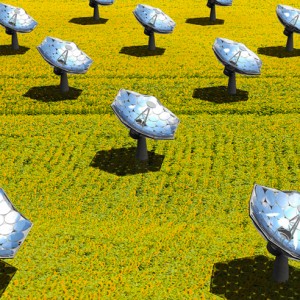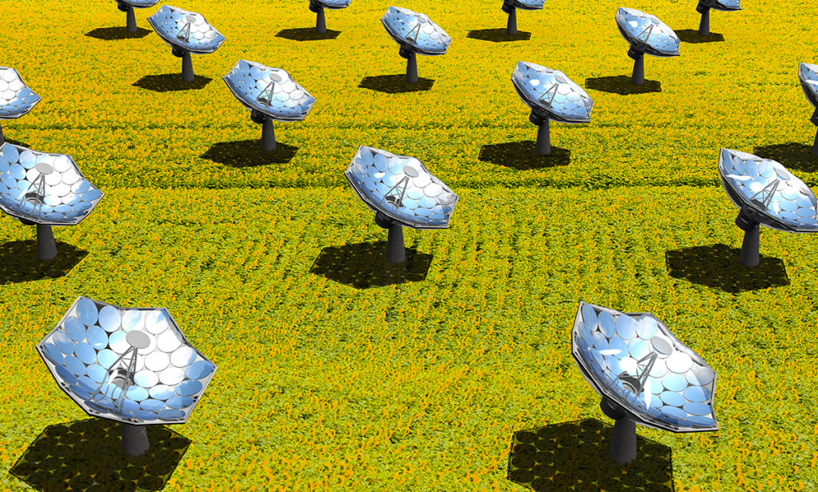IBM Research and Airlight Energy have combined their efforts to bring affordable solar technology to the market by 2017. The two companies are building a solar parabolic dish that can concentrate the sun’s rays by 2,000 times, and transform 80% of this radiation into electricity. The structure, when completed, is 10 meters high and resembles a sunflower. This solar sunflower system is designed with a capacity to produce 12 kW of electrical power and 20 kW of heat during sunny days. It will be capable of providing electricity as well as hot water or air conditioning to several households.
This new IBM solar Sunflower power innovation offers more advantages than conventional solar PV systems. Current solar technology takes up too much room and is generally expensive considering its energy output.
This solar Sunflower, on the other hand, hopes to change the current norm by combining large outputs in one machine. The IBM solar structure uses several reflective panels arranged in a unique pattern, resembling that of an open sunflower.
Solar Sunflower structure
There are 25 solar panels in the solar Sunflower which are cooled by water flowing in micro-channels underneath. In the process, heat is carried away which makes the photovoltaic chips work more efficiently. This enables the solar structure to produce four times more power than conventional solar panels.
The heated water produced by the Sunflower can be used in coastal areas to provide electricity for a water desalination plant. IBM says that the Sunflower can produce 2,500 liters of fresh water per day.
It can also be used in non-coastal areas to supply purified water where there are sources of dirty water. By exposing the Sunflower for 10 hours under the sun’s heat, IBM claims that it should be able to generate 12 kW of electricity and 20 kW of heat.
The solar mirrors used in the structure are made from relatively cheap metalized foil, similar to those used inside the bags of crisps. Inexpensive energy storage is also being planned such as storing heat generated from the sunflower in rocks to be used later.
When completed, the first IBM solar sunflower will be tested in India and Morocco in 2016. An expected release in the market is slated on 2017.
Towering at 33 feet with a weight of about 10 tons, the Sunflower will be based around an array of water-cooled solar chips. These chips gather the sunlight directed at them from 36 elliptic mirrors which are made of 0.2 mm-thick recyclable foil coated with silver.
The dish assembly measures about 40 square meters, and made of patented fiber-based concrete. It is designed to automatically track the sun’s path throughout the day which will optimize the collection of solar radiation.
To maintain the safe operating temperature of the solar panels at 105 degrees Centigrade, treated water will be piped in within a few tens of micrometers of the PV chips. The resultant hot water will then be used for heating or cooling or as potable water after it is desalinated.

